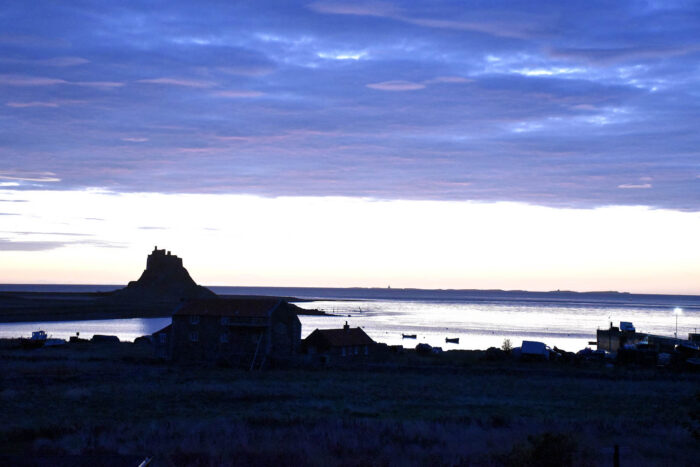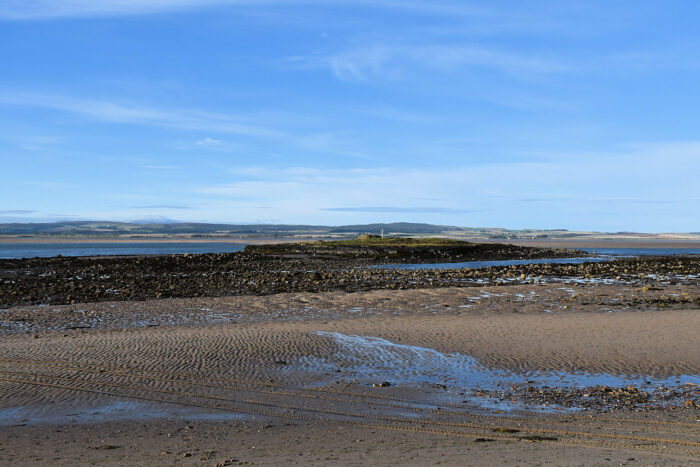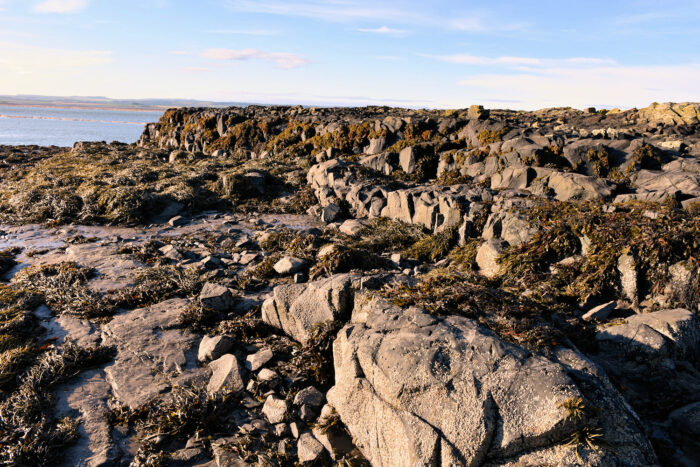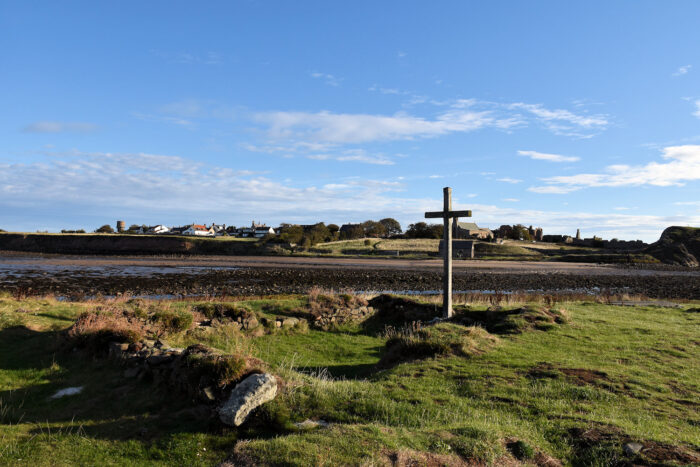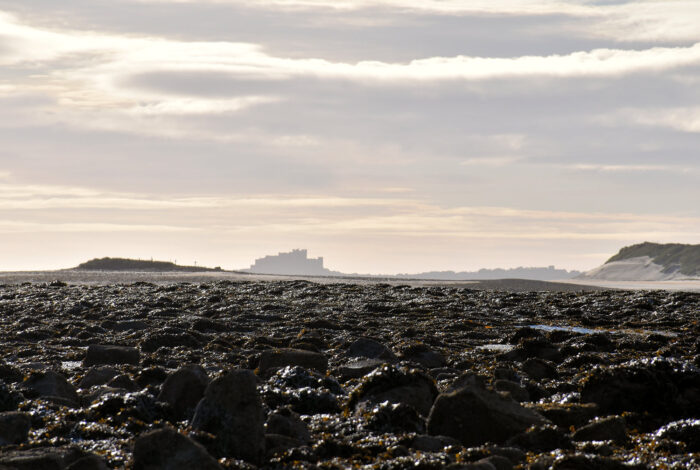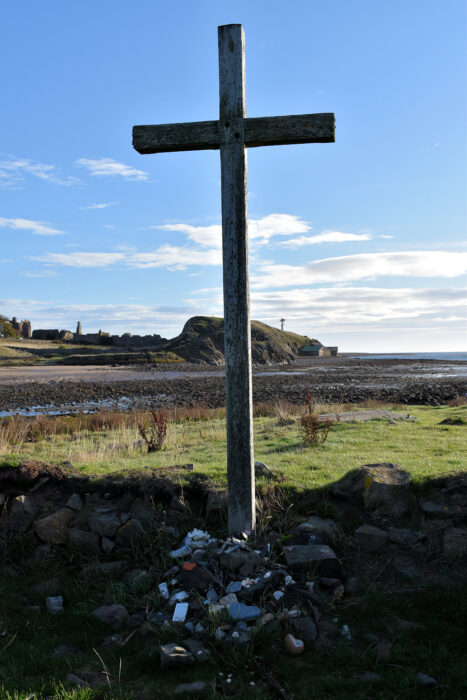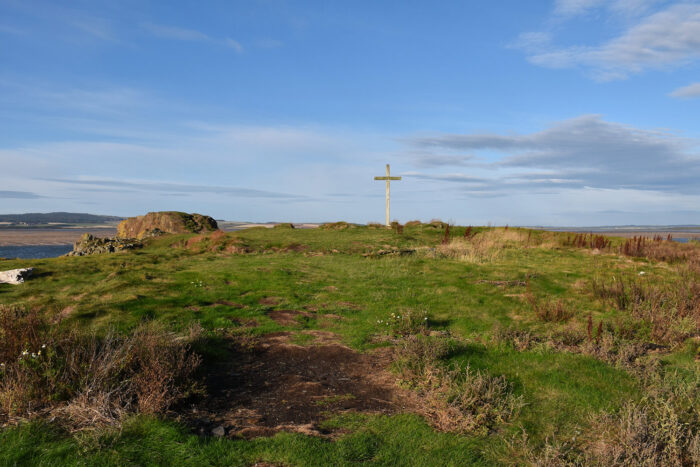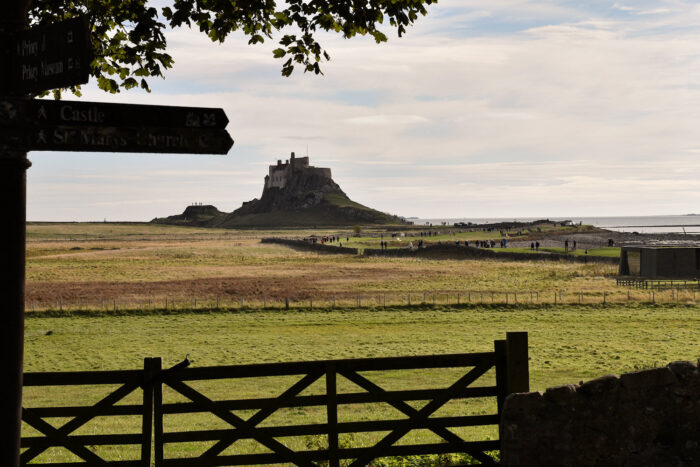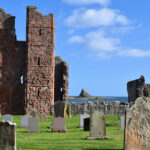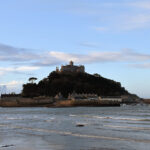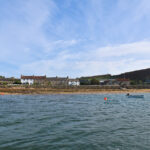That’s a view to wake up to!
Now, the little island I showed yesterday, St Cuthbert’s Island, turns out to be a tidal island. (A tidal island off a tidal island.)
So at low tide you can walk out there, and low tide of course is currently early in the morning. (It was about 9 am when I went down.)
By “walk” I mean pick a way over this that isn’t too wet
and then up these slippery, rocks.
A chapel dedicated to St Cuthbert is mentioned by Bede (AD 673-735) and described as being in the outer precincts of the Anglo-Saxon monastery; it is believed to refer to this island. The island was used by Cuthbert (c.AD 630-687) and his successor Eadberht as a retreat. It has been suggested that the Anglo-Saxon retreat might be comparable with that described by Bede on Farne, and comprise a cell and an oratory or chapel for private prayer, and possibly an enclosure. The chapel [that now remains], possibly on the site of an earlier oratory, is thought to date in its present form to the 13th century AD. It is rectangular in plan and measures 9m east-west by 5.8m north-south with walls 0.75m wide and now standing to a maximum height of 0.8m. There is an entrance 2m wide in the south wall and a threshold stone is visible through the turf. At the east end of the chapel is a modern wooden cross.
Historic England
There is a good view from out there. You are both away from everything and surrounded by everything.
Holy Island is definitely a worthwhile place to visit, despite the tricky access. It brings together a number of interesting threads. . If you were a Christian person or strongly spiritual, you might find it very moving, but even if you’re not, it has a lot to give.
I don’t think I’d come in summer though. I thought yesterday was busy but today here are five tour buses and you can see the stream of people heading up to the castle. In a couple of hours, they’ll all be gone and quiet will descend again.
